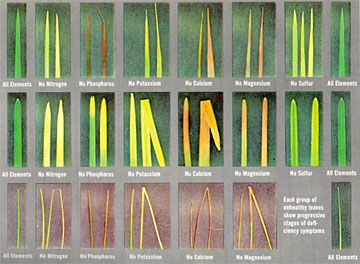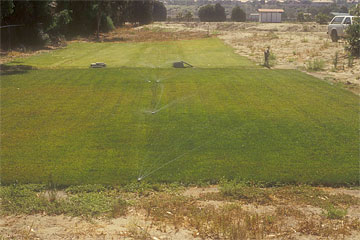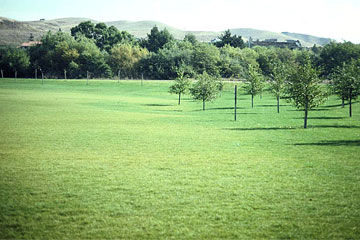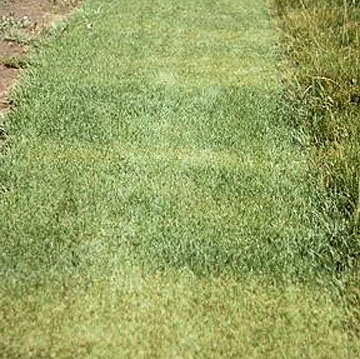Salinity Management Guide
Problems involving turfgrasses
Plant damage caused by nutrient deficiencies

Photo from Beard, James B., 1982, Turf Management for Golf Courses. |
Each row of images shows the symptoms of progressive deficiency of N, P, K, Ca, Mg and S. |

Photo courtesy of Dave Shaw. |
Symptoms: Turf in the background was irrigated with potable water; it appears to be chlorotic. Turf in the foreground was irrigated with recycled water; it is darker green (turf trial at the Whispering Palms Golf Course). Diagnosis: The background turf plot is deficient in nitrogen. The foreground plot is healthier (darker green) because the recycled water contained 11 mg/L nitrogen. For an annual irrigation of 7.5 ft per acre, the recycled water used at the site provides additional nitrogen at the rate of 225 lbs per acre. Conclusion: Turfgrass can benefit from irrigation with recycled water that contains moderate amounts of nitrogen. |

Photo courtesy of Ali Harivandi. |
Symptoms: Extensive chlorosis of landscape. Diagnosis: Nitrogen deficiency. Solutions: Apply nitrogen fertilizer. If recycled water is used for irrigation, calculate how much ammonium and nitrate it contributes to plants and factor those in when calculating the overall fertilizer budget and fertilizer application rate. |

Photo courtesy of Ali Harivandi. |
Symptoms: Kentucky bluegrass, the left hand strip of which exhibits chlorosis. Diagnosis: Nitrogen deficiency is almost certainly the cause. Solutions: Increase nitrogen-fertilizer application rate. |
| « Previous page | Next page » |